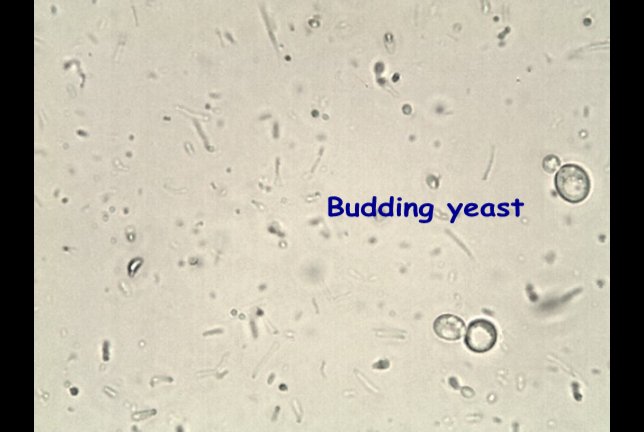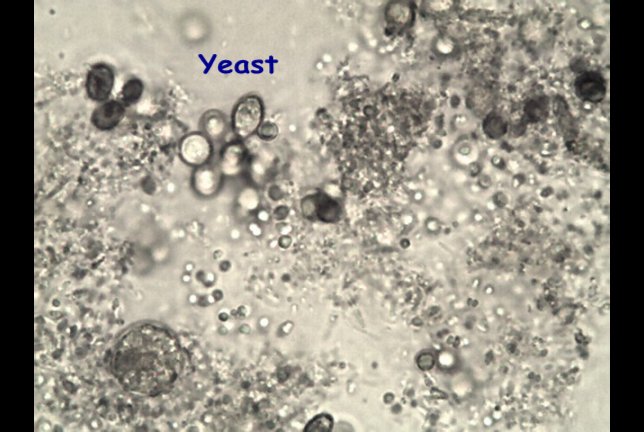Biological Products:
Bioaugmentation products for Wastewater applications in Papermills, Refineries, Chemical, Tanneries, Municipalities, Textiles, Steel, Agriculture, Animal feedlot, Gun Powder plant, Food and Beverage- Dairy Products, Orange Juice factory, Wineries, Cookie factory, Vegetable processing plant, Meat packing, Barbecue Restaurant, Aquaculture, Ornamental Ponds with algae , CAFO, Nursing homes, Military, Campgrounds, Universities, Regulatory agencies, River and Lake remediation
Lab Services:
Filamentous Identification Lab Service. One reason to identify filaments is to determine the filaments characteristics and then determine the type present. If the type is found out, a root cause can usually be associated with a particular filament. If the cause is known, then a correction can be made to alleviate problems. Chlorination is only a quick fix. Without process changes, filaments will grow back after chlorination. Wastewater Biomass Analyses and Cooling Tower Analyses also available
Training Materials:
Training is an integral part of any job. Not everyone is at the same level of training. Many people want beginning concepts and basics. Some need technical information or troubleshooting. Some want equipment, technology or process information. We have developed a full set of Basic training, Advanced training, Filamentous Identification the Easy Way as well as custom training CD's Manuals. We also provide hands-on training classes and soon will have an Online "E-University".
|
Fungi and Yeast
Latest News!
We hope you like the new look of our Bacteria Identification Pages If you would like more information on filaments, you might want to consider purchasing our Filamentous Identification the Easy Way Training materials. We also have our lab that can perform a Filamentous identification lab analysesof your own MLSS for more information
Yeast and Fungi This organism may look different. It may be small cells, budding, or large filamentous like hyphae whether it is caused by nutrient deficiency or low pH. It may be there are more than one versions of this bacteria. Technically consider this a group of bacteria with similar causes and controls. Don't get overly technical. When trying to determine species, stick to the basics, and focus on the causes and controls of the filaments present. The main point of any filamentous identification is not to get a PhD, but to fix your plant!
Identification
Most fungi have vegetative bodies called thallus or soma and are composed of one-cell-thick filaments called hyphae. These generally do not coalesce into a visible object, but instead form a microscopic network within the substrate, called the mycelium, through which food is absorbed. The more conspicuous parts of fungi like mushrooms are fruiting bodies, which are reproductive structures that produce spores.
Fungi may reproduce asexually, for instance through the production of spores called conidia (Greek for dust), which form at the tips of specialized hyphae called conidiophores. In some fungi sexual reproduction has been lost, or is unknown.
Similar Organisms: Fungi can be similar to Cyanophaecae or large type 0041 although neither of these are branched. Fingered zooglea can look like fungi- notice how the fungi has a more defined cell wall and the zooglea does not.
Environment: Fungi and yeast are usually found in environments where there is a low pH. They are usually common in a biotower or a trickling filter. They can cause "plugging or ponding".
Control: Low pH is usually the cause of fungi and yeast. pH can be increased on the influent or in the MLSS to above pH 7 and usually with a little bit of time they disappear. Check solids holding times in primaries, EQ tanks, clarifiers, dewatering or digestors also.
Problems associated with Fungi: Fungi is often a cause of bulking. Too much fungi can cause an increase in polymer consumption and make dewatering harder.
Yeast Identification:
Similar Organisms: Yeast can appear similar to Tetrads. The presence of large amounts of yeast in the wastewater can indicate a low pH, the existence of fermentative conditions, or a severe phosphorous deficiency. Raising the pH above 7 will usually make the yeast disappear.
Yeasts can reproduce asexually through budding or sexually through the formation of ascospores. During asexual reproduction a new bud grows out of the parent yeast when the condition is right, then after the bud reaches an adult size, it separates from the parent yeast. Under low nutrient conditions, yeasts that are capable of sexual reproduction will form ascospores. Yeasts that are not capable of going through the full sexual cycle are classified in the genus Candida.
Environment Yeast physiology can be either obligatory aerobic or facultatively fermentative. There is no known obligatory anaerobic yeast. In the absence of oxygen, fermentative yeasts produce their energy by converting sugars into carbon dioxide and ethanol (alcohol). In brewing, the ethanol is used, while in baking the carbon dioxide raises the bread and the ethanol evaporates. Many food, dairy, breweries and wineries have yeast present in large amounts in the influent. Yeast can cause high levels of TSS and cause an increase in polymer usage to reduce TSS in final effluent if not controlled.
This type of bacteria can be extremely large, non-motile bacteria. The bacteria staining is usually Gram negative and Neisser negative. There are usually no sulfur granules present. Zooglea can be "fingered or amorphous". Zoogleal bacteria also have the ability to denitrify.
For more information on Filamentous Identification More photos to come. . .
If you need more information on our Filamentous Identification the Easy Way Training CD or on Internet training on Filamentous bacteria, causes and controls. How and why on Wastewater Biomass Analyses Wastewater Bioaumgentation Products
|

 Fungi are extremely large, non-motile filaments (300-1000 µm). They can
be straight, irregularly curved or bent filaments with true branching. Cells
are very rectangular (3-8 x 5-15 µm) with very large trichomes and contain
organelles and large intracellular granules and structures. A heavy cell
wall is usually present. Cytoplasmic streaming may be observed. Fungi
are found mostly within the floc structure. The fungi staining is Gram
negative and Neisser negative. No sulfur granules are usually present. There
is usually no attached growth. No sheath is present.
Fungi are extremely large, non-motile filaments (300-1000 µm). They can
be straight, irregularly curved or bent filaments with true branching. Cells
are very rectangular (3-8 x 5-15 µm) with very large trichomes and contain
organelles and large intracellular granules and structures. A heavy cell
wall is usually present. Cytoplasmic streaming may be observed. Fungi
are found mostly within the floc structure. The fungi staining is Gram
negative and Neisser negative. No sulfur granules are usually present. There
is usually no attached growth. No sheath is present. 
 Yeast are a group of unicellular fungi a few species of which are
commonly used to leaven bread and ferment alcoholic beverages. Most yeasts
belong to the division Ascomycota.
Yeast are a group of unicellular fungi a few species of which are
commonly used to leaven bread and ferment alcoholic beverages. Most yeasts
belong to the division Ascomycota.

